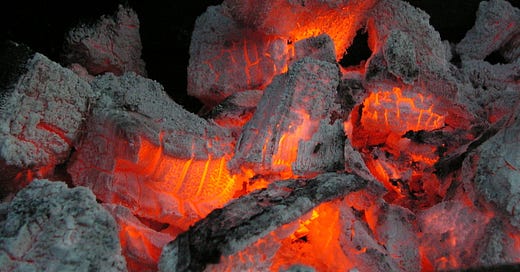Case study
Hi Gavin
Re: Smouldering disease and relapses without MRI activity
To me, the concept of smouldering disease makes sense with my MS, which still fully recovers. My EDSS is 1.5 and I am on ocrelizumab after failing alemtuzumab.
Do many neurologists buy into the concept of smouldering MS? I feel like I am hitting walls when I mention that I feel I am getting worse and have had a small new relapse, with nothing on the MRI, and get looked at like it is just anxiety or I am making it up because nothing shows on my MRI.
I am not given steroids for them because nothing shows up on the MRI. However, symptoms do last for 2-3 weeks before fully recovering. Ocrelizumab has stopped lesion activity for 3.5 years but I do feel that there is still underlying MS disease activity, is this considered smouldering?
Thank you
Ms Pseudo-anonymous

Prof G’s opinion
Smouldering MS
Smouldering MS is not a new concept and most neurologists who specialise in MS understand the principles underpinning smouldering disease. Please note the terminology of smouldering MS has not been widely accepted. Other terms include non-relapsing progressive MS, progression independent of relapses or PIRA, silent progression or hidden progression.
Neurologists don’t like talking about smouldering MS because we don’t have any treatments for this component of MS.
I have just written a review paper with a large number of colleagues on the concept of smouldering MS and in it, we make the case for it being the ‘real MS’ using the term smouldering disease. I assume you have read the MS-Selfie Newsletter ‘Getting Worse’ (2-Jul-2021), which explains the biological concepts underpinning your observations.
I don’t want to depress you, but there is good evidence that smouldering MS starts very early. In fact, it is found in asymptomatic disease (radiologically isolated syndrome) and in pwMS after their first attack (CIS or clinically isolated syndrome). At ECTRIMS this year there was a presentation from the Barcelona group showing that 30% of people with CIS experienced PIRA within 2-3 years of follow-up. This is why our current DMTs (disease-modifying therapies) are simply not good enough to stop smouldering disease.
I note you are on ocrelizumab. I assume you are aware that PIRA still occurs on ocrelizumab and ocrelizumab and other anti-CD20 therapies. In general, anti-CD20 therapies don’t normalise the rate of brain volume loss. In other words, anti-CD20 therapies are good at stopping relapses and focal MRI activity, but they are not stopping smouldering disease. This is why we need to do add-on trials in MS.
Relapses without MRI activity
In my opinion, MS is a biological and not a radiological disease.
MS is a biological disease that is characterised pathologically by multifocal inflammatory lesions that cause demyelination and variable degrees of axonal loss. Please note I have dropped using the term white matter. MS is clearly both a white and grey matter disease with more than half the lesion burden in the largely MRI-lesion-invisible grey matter component. Even in the white matter where it is easier to see lesions the resolution of an MRI scan is down to about 3-4 mm. Many more lesions are found pathologically than what is seen on MRI or with the naked eye.
A very small lesion in a strategic pathway can cause typical symptoms and signs, but when you investigate many of these patients with an MRI scan you see no obvious lesion in the expected area. This happens more often than not with a so-called internuclear ophthalmoplegia (INO); a very specific eye movement problem that presents with double-vision on looking to the left or right. This is an example of a microscopic lesion causing an MS attack. This is why we shouldn’t be using MRI to confirm, or make, a diagnosis of relapse in pwMS.
The Kutzelnigg study is rapidly becoming a citation classic in the field of MS, for showing with elegant infographics how large the lesion burden is in areas that are MRI invisible using our standard clinical MRI sequences (Kutzelnigg et al. Cortical demyelination and diffuse white matter injury in multiple sclerosis. Brain. 2005 Nov;128(Pt 11):2705-12.).

So don’t get fobbed off by your neurologist. I suspect at least 20% of relapses, and probably more, are not associated with new lesions on MRI. I have a small collection of such MRI-negative relapses that we can confirm by finding raised neurofilament levels. I now call these biochemically-confirmed MS relapses.
I am running a long slow campaign to get MS redefined as a biological disease and to get the MS community to move away from the current clinico-radiological definition of MS (see MS Endophenotype below). Do you agree with me? I know many of my colleagues don’t.
Subscriptions/Donations
I have changed the funding model of MS-Selfie. Access to MS-Selfie and the microsite, when it is ready to go live, will be free to all readers. I am therefore relying on voluntary paying subscribers and future paying subscribers to continue supporting the site for everyone. So if you value these Newsletters and Case studies please consider becoming a paying subscriber. I would like to thank those of you who have become paying subscribers already; your support is much appreciated.















Share this post